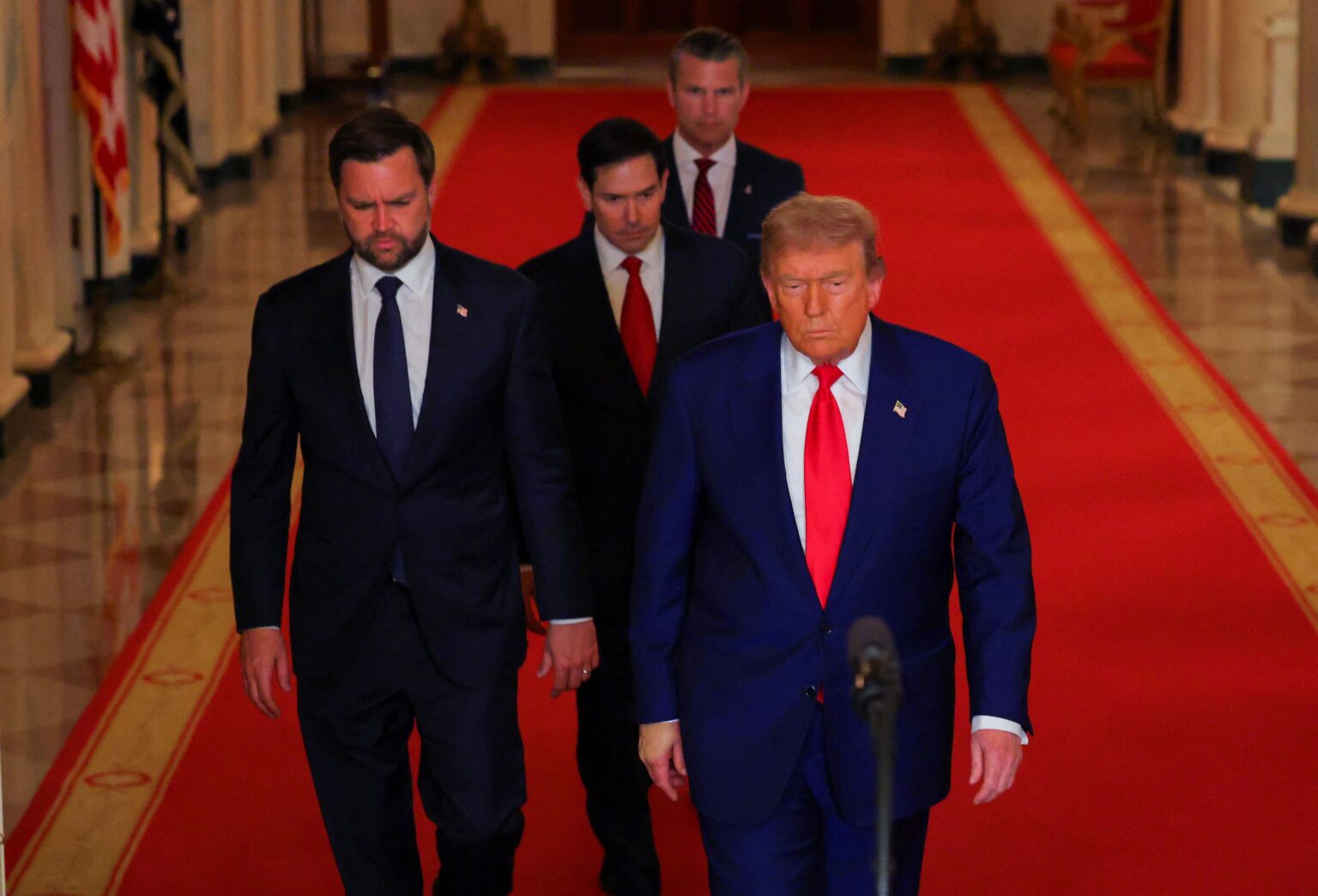Strategic Shift: U.S. Military Action Against Iran Marks a Turning Point
In a bold move on Saturday, President Donald Trump authorized a precision strike targeting Iran’s nuclear enrichment facilities-an unprecedented decision that signals a significant departure from his previous stance on military intervention in the Middle East. This action aims to dismantle a nuclear program that has challenged multiple U.S. administrations, while also attempting to avoid the protracted conflicts that have historically embroiled the region.
Implications for U.S. Foreign Policy and Global Power Dynamics
The immediate aftermath of this military operation will profoundly influence Trump’s presidency. If Iran’s capacity to retaliate is sufficiently diminished, the strike could serve as a powerful demonstration of U.S. resolve, sending a clear message to rivals like China and Russia that Washington is prepared to employ military force when national interests are at stake. Such a display of strength could reshape international perceptions of American military willingness.
Conversely, should Iran refuse to accept Trump’s conditions for peace, the president’s warning that “many targets remain” opens the door to a broader and potentially prolonged conflict. This possibility has already sparked concern among some members of his political base, who are wary of escalating tensions in a volatile region.
From Anti-War Rhetoric to Military Engagement
Trump’s decision marks a stark contrast to his 2016 campaign promises, which emphasized a rejection of the Iraq War and a commitment to avoiding costly foreign entanglements. During his rise, he criticized former President George W. Bush’s invasion of Iraq and pledged to prevent the U.S. from draining its resources in conflicts that offered limited strategic gains. In recent months, however, Trump appeared to pivot towards diplomacy with Iran, even unsettling hawks within his own party by pursuing negotiations rather than military strikes.
The Strike: A Calculated and Covert Operation
Saturday’s attack involved a long-range, stealthy bombing campaign utilizing some of the most powerful conventional munitions in the U.S. arsenal, targeting Iran’s deeply buried nuclear facilities located beneath mountain ranges. President Trump described the operation as “a spectacular military success” in a brief White House address, asserting that Iran’s key nuclear sites had been “completely and totally obliterated.”
Notably, there was no indication of ground troop deployment, emphasizing a surgical approach. Trump’s speech was accompanied by a stark warning: “There will be either peace or tragedy for Iran, far greater than we have witnessed over the last eight days,” he stated, hinting at the possibility of further military escalation if Iran does not comply with U.S. demands. “There are many targets left,” he added, underscoring the potential for a deeper conflict.
Risks and Regional Consequences
Iran’s population exceeds 80 million, and its government has demonstrated a long-standing ability to project influence across the Middle East. A retaliatory strike against U.S. personnel or assets could rapidly escalate into a broader regional conflict, reminiscent of past confrontations that no U.S. president previously dared to initiate against Iran’s nuclear ambitions.
Experts warn that this gamble could entangle the U.S. in a regime-change war, prolonging military engagement in the Middle East for decades. Rosemary Kelanic, director of the Middle East program at Defense Priorities, cautioned that if Iran retaliates, the resulting loss of American lives could intensify calls for regime change, further complicating U.S. foreign policy.
Furthermore, if Iran retains enough uranium and enrichment capacity, the attack might accelerate efforts to develop nuclear weapons, although current intelligence suggests Iran has not yet crossed that threshold.
Historical Context and Political Reactions
Trump’s rise was largely fueled by widespread opposition to Middle Eastern wars, exemplified by Hillary Clinton’s 2002 vote to authorize the Iraq invasion. Trump’s rhetoric often emphasized a desire to avoid such conflicts, yet recent actions suggest a shift towards more aggressive military postures. This paradox has sparked debate among supporters and critics alike.
Following the strike, some of Trump’s most ardent supporters expressed concern, with prominent figures like Stephen K. Bannon and Charlie Kirk publicly questioning the move. Bannon acknowledged that many MAGA followers were uneasy, noting that some felt Trump had promised to avoid such military interventions. Kirk, meanwhile, defended Trump’s decision, citing his previous tactical successes, including the targeted killing of Iranian General Qasem Soleimani in 2020.
International Alliances and Regional Dynamics
Prior to the strike, Trump coordinated with Israel, which has long sought to curb Iran’s regional influence. Israeli Prime Minister Benjamin Netanyahu, whose campaign against Iranian proxies has significantly weakened Tehran’s regional standing, publicly praised Trump’s actions, framing them as a historic step toward regional stability and prosperity.
The U.S. government reportedly informed Israel of the operation beforehand, highlighting the close cooperation between the two nations. Following the attack, Trump and Netanyahu reaffirmed their alliance, emphasizing a shared commitment to counter Iran’s nuclear ambitions.
Public and Political Discourse
Reactions across the political spectrum have been mixed. While some supporters see the strike as a necessary assertion of American strength, others worry about the potential for escalation. Conservative commentators like Bannon and Kirk, who have previously cautioned against war, now find themselves grappling with the reality of military action, urging patience and caution among their followers.
Meanwhile, younger conservatives and independent analysts express concern over the long-term implications, questioning whether the U.S. can afford another prolonged conflict in the Middle East. The operation involved a combination of advanced aircraft, including B-2 bombers and fighter jets, deploying massive bunker-busting munitions designed to penetrate Iran’s fortified underground facilities.
Contradictions in Trump’s Military Posture
Despite his rhetoric about ending wars and seeking peace, Trump has recently engaged in displays of military strength, such as a large Army parade and deploying troops domestically to quell protests. His statement that “there’s no military in the world that could have done what we did tonight” underscores a paradoxical approach-combining diplomatic rhetoric with aggressive military action.
As the situation unfolds, the coming days will reveal whether this bold strike will lead to a new chapter of diplomacy or spiral into a broader regional conflict, testing the limits of Trump’s strategic calculus and the resilience of U.S. foreign policy.

